Recently, I presented why it makes sense for K-12 leaders to create a unified vision for what the learning spaces in their district should look like. Establishing a district-wide standard simplifies the design process for new learning spaces, guarantees consistent high quality, keeps projects within a defined budget, and helps achieve equity for students and teachers—while ensuring that every space where learning occurs is furnished and equipped to support effective instruction.
How should K-12 leaders craft a standard for learning space design? The process begins with understanding your instructional vision and what you want teaching and learning to look like to produce the type of graduate you desire. How you design your learning spaces plays a key role in supporting and enabling the type of instruction you’re looking to promote.
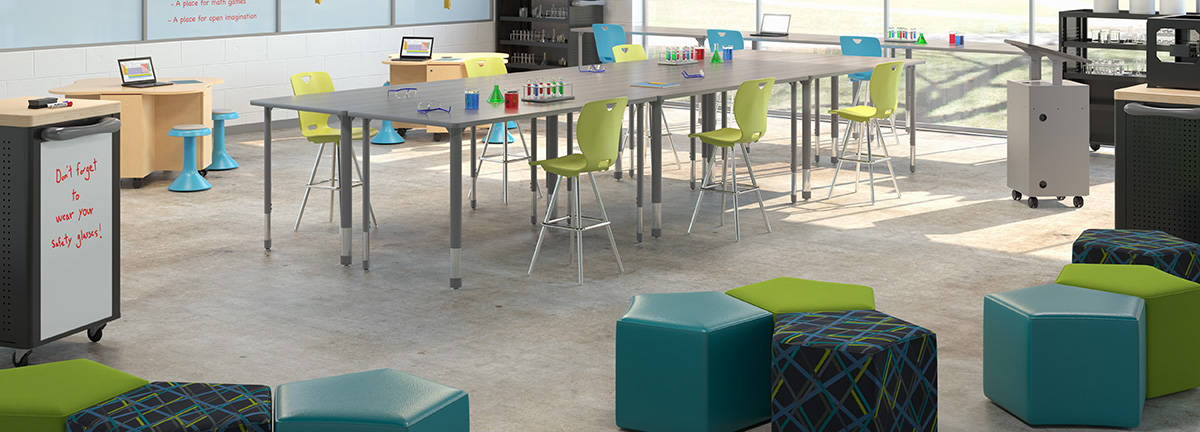
In undertaking this process, here are six key factors to consider.
CHOICE
Giving students choices gets them more invested in their education. It enables them to take ownership of their learning, which leads to deeper engagement. Choice also makes classrooms more inclusive: Something as simple as having multiple seating styles to choose from can support different preferences and helps students feel welcome.
Flexible learning environments are most conducive to student engagement, ownership, and achievement. Any time a student is able to make choices as it relates to their learning, they are innately more engaged and assume ownership.1
For these reasons, learning spaces should give students plenty of choices in where and how to complete their work, with a variety of seating options, tools, and materials. Classrooms that include multiple seating options help students make their own choices to support how they learn best.
Aside from traditional desks and chairs, consider including:
COMFORT
Students learn best when they’re comfortable. To make sure students can work comfortably, tables, desks, and chairs should be ergonomically designed and age appropriate. Because some students are sensitive to certain types of materials, learning spaces should offer seating options with different fabrics and surface types. What’s more, environmental factors such as lighting, acoustics, temperature, and air quality should be at optimum levels for learning. These four factors can be retrofit into a space to make it more comfortable.
We know from recent research that learning space design “is pivotal for students to participate in active learning,”2 so we want to pay special attention to student comfort. To make sure all students will be comfortable, here are some design features to consider:
- Height-adjustable seating, desks, and tables
- Hard and soft seating options and seats that have movement
- Shades to soften overhead fluorescent lighting
- Sound-absorbing panels that minimize ambient noise and reverberation
Versatility
Modern learning environments must be able to support a wide array of instructional methods, curriculum, supplies, and learning activities. There might be times when the teacher is providing direct instruction to the entire class or to a subgroup of students, while at other times students are having a class discussion, working in small groups, or working individually. The design of the learning space should facilitate each of these activities.
One way this can be done is through the use of learning zones, or separate areas for supporting diverse instructional strategies. For instance, a learning space might have one area that’s used for small-group collaboration, another section for students to read or work individually, and so on. Each zone would be equipped with furniture and materials that are appropriate for that particular kind of learning.
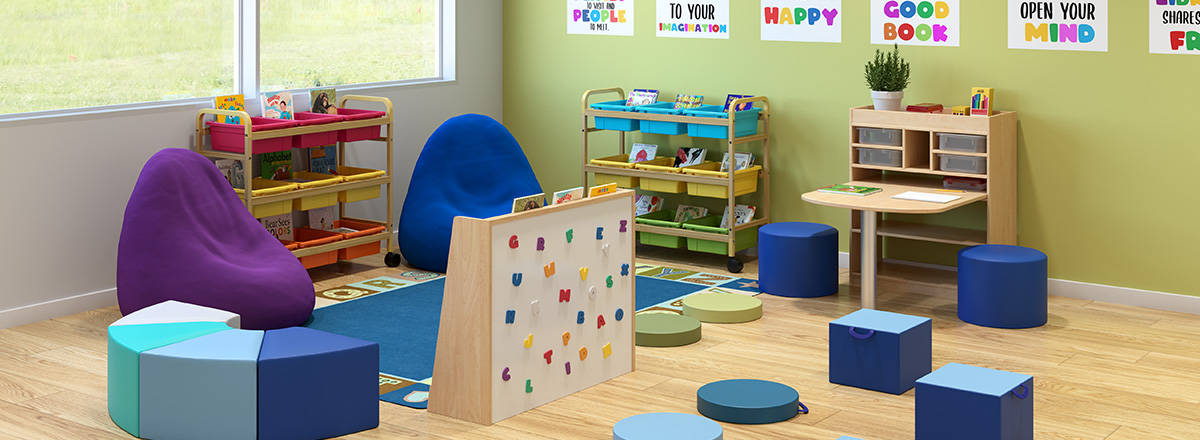
Not all learning spaces are large enough to contain separate learning zones. In that case, educators can create flexible, multiuse spaces by using moveable, modular furniture that can be configured in different ways. For instance, students might sit at individual desks or in small groups for direct instruction and rearrange into larger groups to work on projects or into a large circle for a Socratic seminar.
Another aspect of versatility is having furniture that can serve multiple purposes simultaneously. Choosing furniture that can serve multiple purposes allows you to maximize your use of the space.
As you think about how to create flexible and versatile learning environments that can support a variety of needs, here are some elements to consider:
- Large, open, multiuse spaces
- Mobile, lightweight furniture on lockable casters
- Mobile whiteboards, AV carts, and other presentation tools
- Writeable desktop and tabletop surfaces
- Mobile storage units that easily can be modified or replaced as storage needs evolve (unlike fixed casework)
- Shelving and storage units on casters that can be used as room dividers to create smaller teaming spaces within a larger space
- Seating with built-in storage for personal belongings
- STEAM or makerspace tables with integrated storage for materials
- Corridors and outdoor spaces that can be used as extensions of the classroom
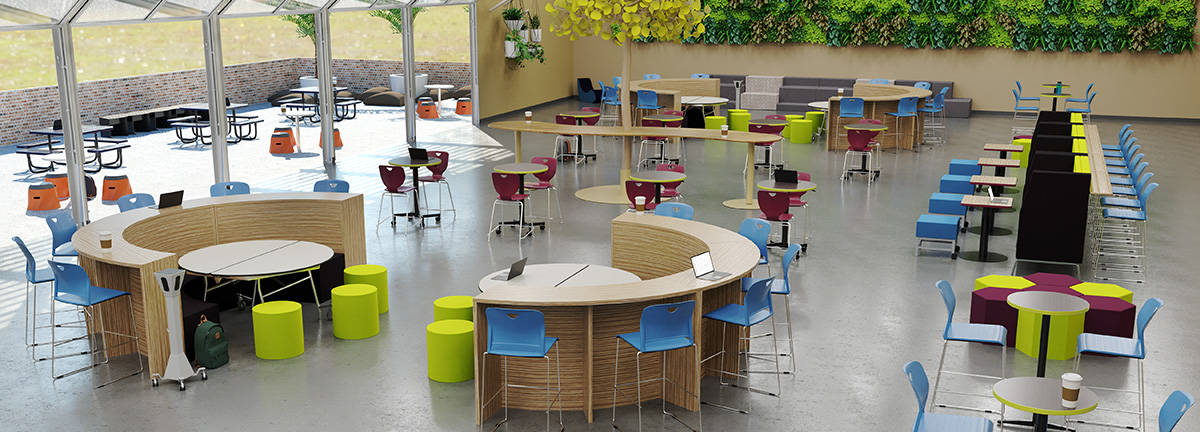
CONNECTION
Education is largely a social activity and learning spaces should be designed to support appropriate interaction between students, their teacher, and their peers.
When students discuss ideas with others, they’re exposed to new perspectives they hadn’t considered before. Working collaboratively, students can co-construct new knowledge and arrive at a deeper level of understanding than they might have on their own. Collaboration also teaches students an essential skill for success in the modern workplace. The World Economic Forum has shown this as one of many needed skills for transition into the workforce.
To facilitate connections between and among teachers and students, consider these design elements:
- Mobile desks and tables that can easily be arranged into flexible group sizes
- Wide, clear walkways for teachers and students to move around the room, listen to conversations, join a discussion, and offer support as needed
- Tools for sharing and presenting information both in person and online
STIMULATION
Learning spaces should be designed in a way that is stimulating and engaging for students. Schools can help foster a culture of continuous learning by making both formal and informal learning spaces intellectually engaging and stimulating, with objects, artwork, and displays that encourage students to continually think, reflect, and explore. Displaying their own work gives students a feeling of ownership, which helps to increase self-efficacy.
There should be opportunities for students to move around as well: “Learning space design is pivotal for students to participate in active learning.”3
Movement increases students’ blood flow, which awakens their cells and stimulates their brains. In turn, students feel more alert and can focus more effectively on their learning.
To promote stimulation, consider design elements such as:
- Stools and chairs that swivel, rock, and allow for movement
- Calming objects such as soothing lights, sounds, and sights
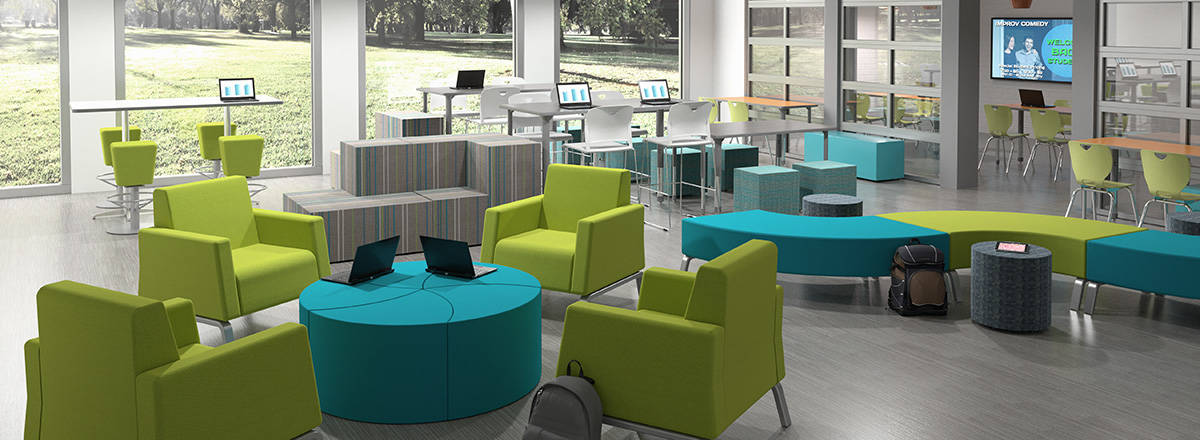
TECHNOLOGY
Modern learning spaces must also support a school district’s vision for using technology to enhance instruction. This includes not just the technologies that will be used in the space but also the infrastructure these devices will require, such as power and connectivity.
To make sure learning spaces effectively support technology use, think about elements such as…
- Power supplies that are easily accessible wherever students might be working—such as mobile charging stations or built-in electrical outlets within desks, tabletop surfaces, and soft seating
- Cord management solutions that hide power cords or stow them out of the way
- “Huddle spaces” with screens and connectivity to support small group collaboration
HOW SCHOOL SPECIALTY CAN HELP
While K-12 leaders can create their own strategic vision for learning space design, partnering with a trusted service provider offers expert insight that district leaders might not have by themselves.
Through a new service called Innovate360TM, School Specialty can help districts create a customized vision for learning space design that meets their unique needs and assemble a catalog of furniture and equipment that will establish a district-wide standard.
1 – Cole, K., Schroeder, K, et al. Flexible seating impact on classroom environment. TOJET: The Turkish Online Journal of Educational Technology. Volume 20, issue 2, April 2021.
2 – (Basdogan, M and Morrone, A, 2021. Journal of Learning Spaces, 10(3), 2021).
3 – (Basdogan, M and Morrone, A, 2021. Journal of Learning Spaces, 10(3), 2021).
Dr. Sue Ann Highland
Sue Ann Highland, PhD, is the National Education Strategist for School Specialty. She has more than 25 years of experience as an educator, administrator, and consultant with school systems across the United States, with broad expertise in designing and creating highly effective learning environments.
Read more by Dr. Sue Ann Highland–>

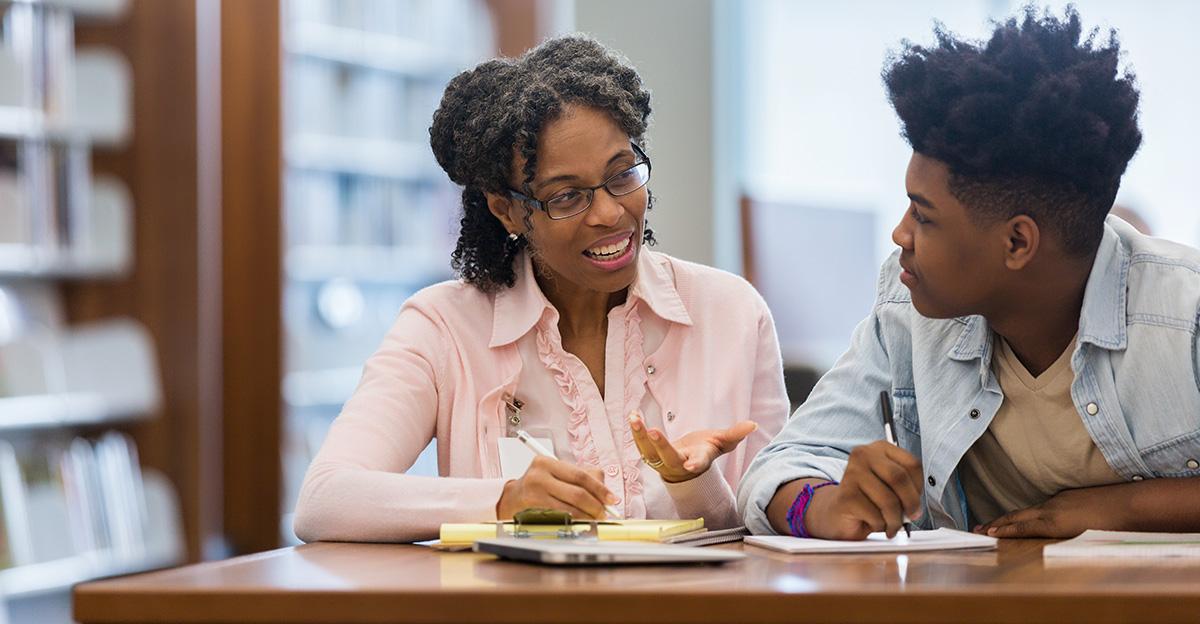





Leave a Reply